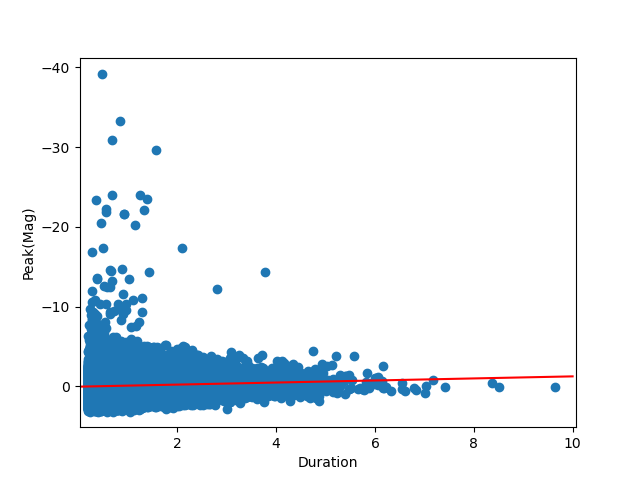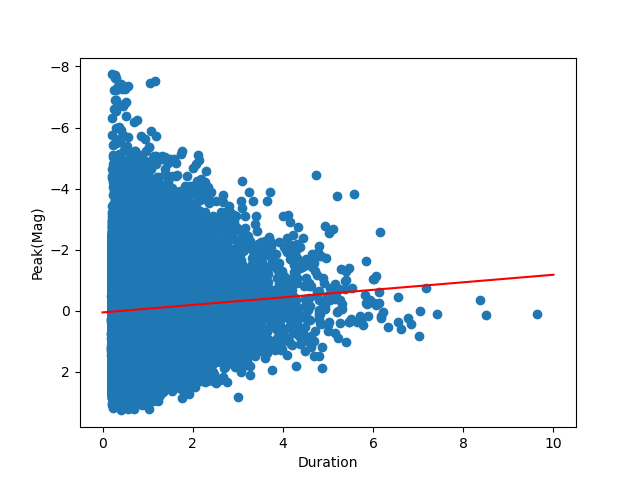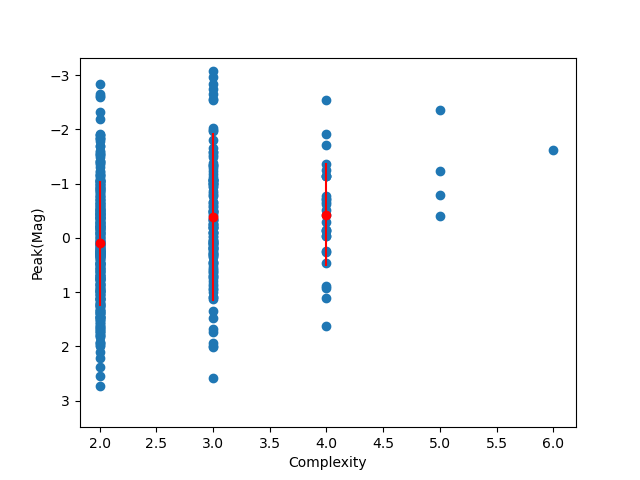Week 10: Graph Analysis – Calibration and Clarification
Mason t -
Hi all! I have continued to increase the amount of analyzed data that will contribute to the final analysis graphs. So far I am beginning to see quite a few trends emerging within a couple of the graphs. At the same time, I have seen some data that is a result of calibration issues. So in this post I’ll be breaking this down a little bit.

First, I wanted to bring back the duration versus peak magnitude plot from last week. I showed this one to my advisor, and there are a couple things about this one: first, peak magnitudes brighter than around -8 to -10 are likely a result of the camera being blown out by the light it is taking in. Basically, the pixels become so washed out that no realistic data can be acquired from it anymore. This happens when you take an overexposed picture on your phone too. The full moon is magnitude -12.9, and the sun is magnitude -26.7. Realistically, there is no way something could be brighter than magnitude -15 without it being a huge deal, so I’ll drop these points out.

Now, considering this reduced curve, we see this sort of wedge shape across the data. This should also not be present, since as duration increases, we expect mass to increase, which would allow for brighter peak magnitudes because of more material present to burn. Instead, the top of the wedge seems to slant down, which is likely a result of overexposure again. The upward slanting bottom of the wedge is more likely a real observation. The positive linear curve fit reflects this as well.

Above is another graph I might not include in my presentation but that I still think is interesting: Complexity versus Peak Magnitude. We can see the mean (red points) may be increasing with complexity, but it’s definitely hard to make a concrete conclusions with the standard error bars (red lines) overlapping so heavily. Instead, we can look at the white space underneath the graph. As complexity increases, there seem to be fewer low peak magnitude (less bright) objects, which would make sense if our hypothesis is still higher complexity = higher mass = brighter.
In other news, I am continuing to put together my presentation and compile some final findings from other plots in order to start wrapping up this project.
Thanks for reading!

Comments:
All viewpoints are welcome but profane, threatening, disrespectful, or harassing comments will not be tolerated and are subject to moderation up to, and including, full deletion.